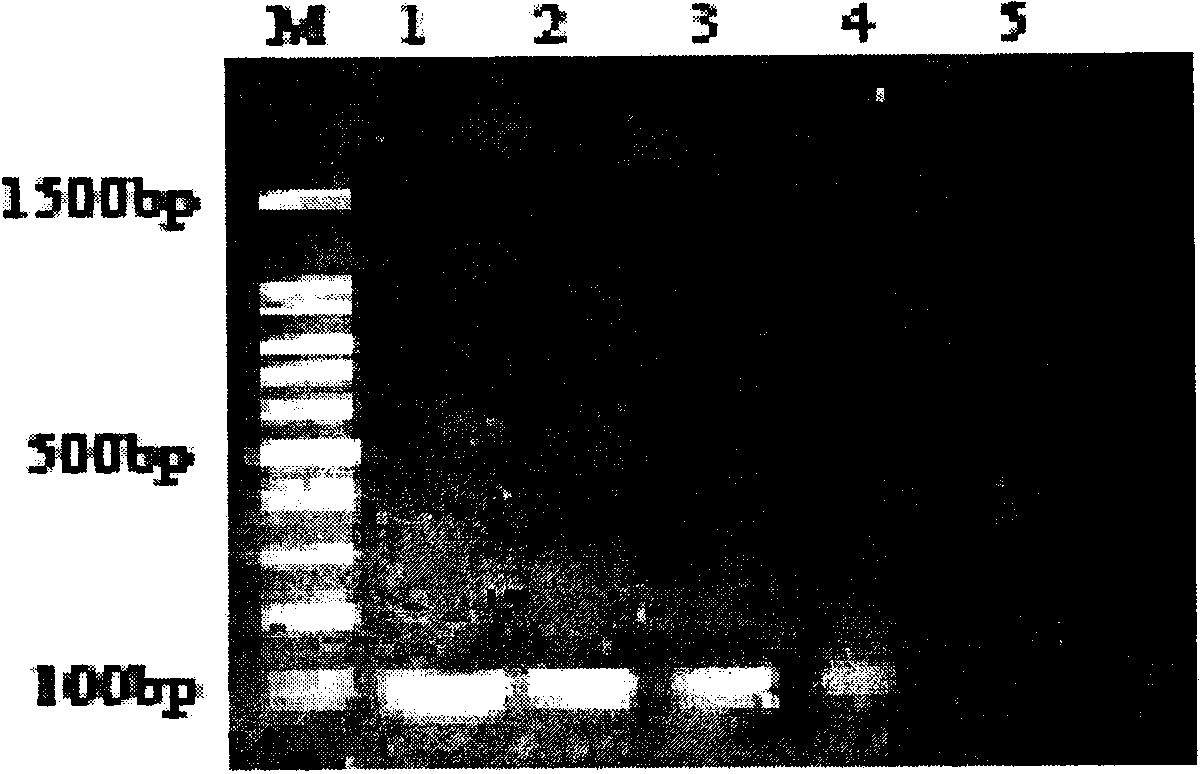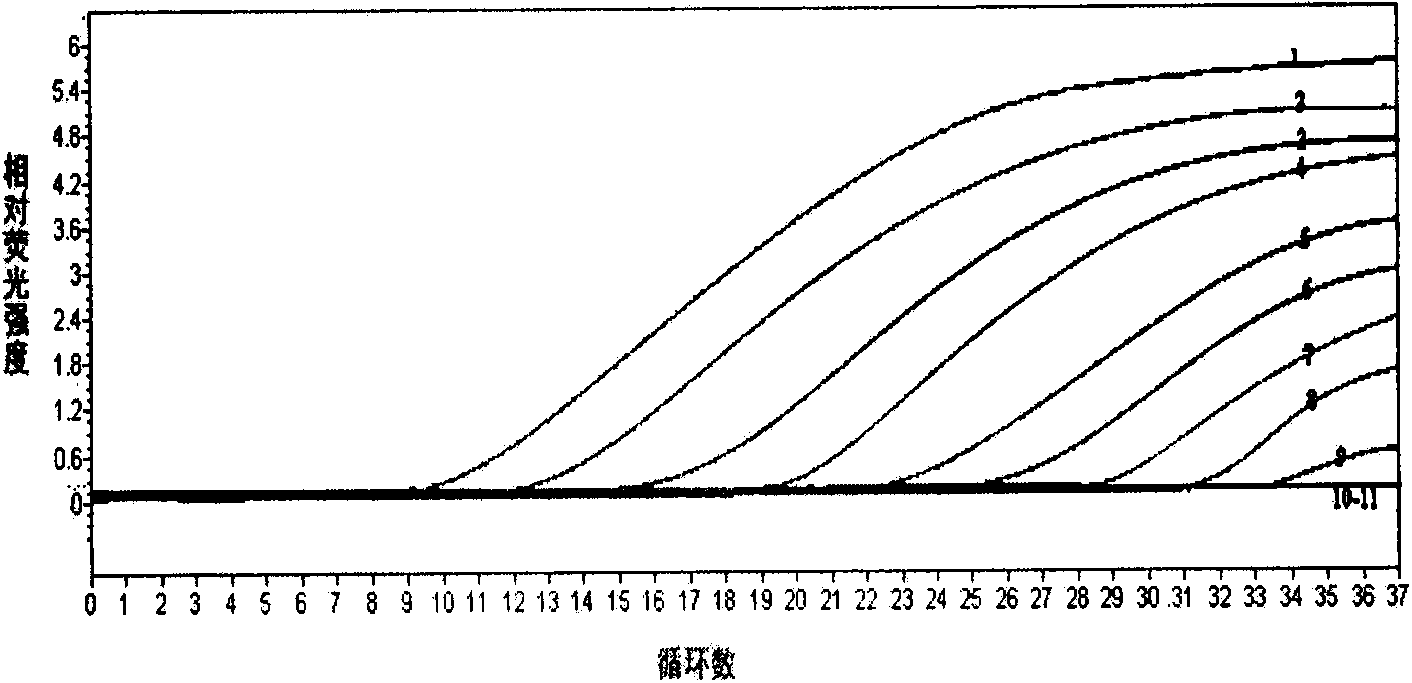Primer, probe and method for qualitatively and quantitatively detecting witches' broom phytoplasma
A quantitative detection and phytoplasma technology, which is applied in biochemical equipment and methods, microbial measurement/inspection, DNA/RNA fragments, etc., can solve the problems of inability to distinguish and identify phytoplasma, and achieve high accuracy and strong specificity , the effect of high sensitivity
- Summary
- Abstract
- Description
- Claims
- Application Information
AI Technical Summary
Problems solved by technology
Method used
Image
Examples
Embodiment 1
[0050] The preparation of embodiment 1 primer and probe
[0051] 1. Design and synthesis of primers and probes
[0052] The primers and probes for the real-time fluorescent quantitative PCR detection of jujube mad disease phytoplasma are designed and synthesized as follows: firstly, the 16S rDNA nucleic acid sequences of all phytoplasmas and representative bacteria are collected in NCBI, and the above-mentioned sequences are analyzed by Omiga software. Carry out comparison and consistency analysis to find out the gene difference sites between Jujube phytoplasma and other phytoplasma, use the software Beacon Designer7.0 to screen out a pair of primers, and set a fluorescent Tapman in the amplification region of the primer pair For the probe, the reporter fluorescent dye is labeled at the 5' end of the probe, and the quencher fluorescent dye is labeled at the 3' end of the probe. After the PCR primers and probes specific to the phytoplasma of jujube mad were designed, online ho...
Embodiment 2
[0060] After the primers and probes were synthesized, they were diluted to 10 μmol / L with sterilized double-distilled water, and the primers and probes were stored in a -20°C refrigerator in the dark for future use. Example 2 Establishment of real-time fluorescent PCR detection method for jujube mad disease phytoplasma
[0061] 1. Extraction of total plant DNA: Plant Genomic DNA Kit (TIANGEN) was used to extract total DNA from jujube leaves, and stored in a -40°C refrigerator for later use.
[0062] 2. PCR amplification of 16S rDNA of phytoplasma jujube mad disease
[0063] The phytoplasma 16S rDNA universal primer pair R16mF2: 5'-CATGCAAGTCGAACGGA-3', R16mR2: 5'-CTTAAC CCCAATCATCGA-3' was used for routine PCR amplification of the total DNA of jujube leaves extracted above. The reaction system is 25 μL: 1.0 μL of DNA template, 1.0 μL of each 10 μmol / L primer, 1.0 μL of 10 μmol / L dNTP, 2.5 μL of 10×PCR Buffer, 0.3 μL of 2.5 U / μL Taq DNA polymerase, sterilized ddH 2 O18.2 μL. ...
Embodiment 3
[0082] Example 3 Application of real-time fluorescent PCR detection method for jujube mad disease phytoplasma
PUM
 Login to View More
Login to View More Abstract
Description
Claims
Application Information
 Login to View More
Login to View More - R&D
- Intellectual Property
- Life Sciences
- Materials
- Tech Scout
- Unparalleled Data Quality
- Higher Quality Content
- 60% Fewer Hallucinations
Browse by: Latest US Patents, China's latest patents, Technical Efficacy Thesaurus, Application Domain, Technology Topic, Popular Technical Reports.
© 2025 PatSnap. All rights reserved.Legal|Privacy policy|Modern Slavery Act Transparency Statement|Sitemap|About US| Contact US: help@patsnap.com



